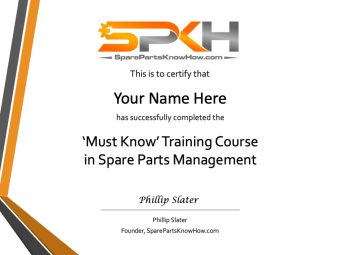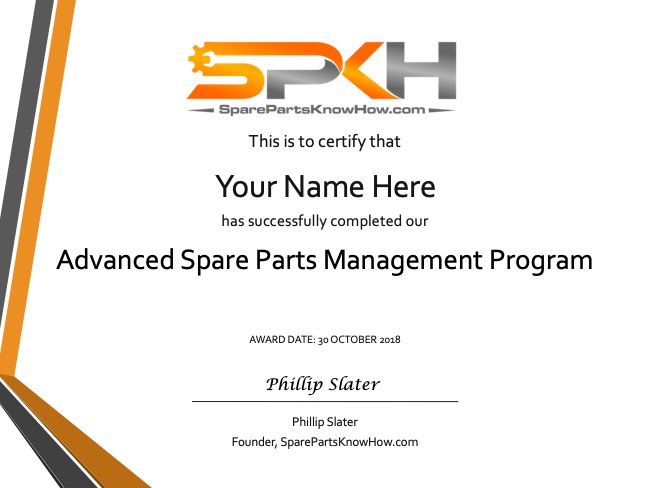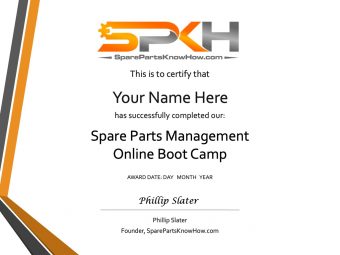Spare Parts Training Academy

'Must Know' Training
Our 'Must Know' Training is a self-paced course that teaches the essential know-how required to manage spare parts inventory.

Advanced Spare Parts Management
The Advanced Spare Parts Management Course covers all the issues faced during the spare parts inventory management lifecycle.
You can study the modules in any order that you choose but you must complete all 8 quizzes to be awarded the certificate.
The pass mark for each quiz is set at 80%.

Online Boot Camp
This intensive online course teaches participants the fundamentals of spare parts inventory management.
Four modules - Four weeks - Interactive, online tutorials - Reading, videos, exercises, workbook.